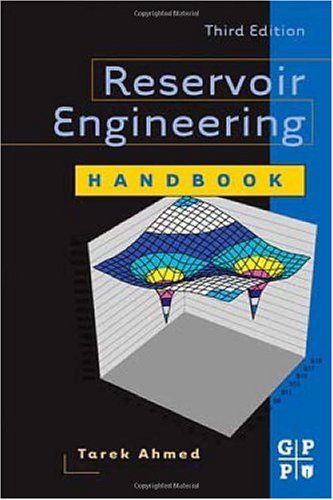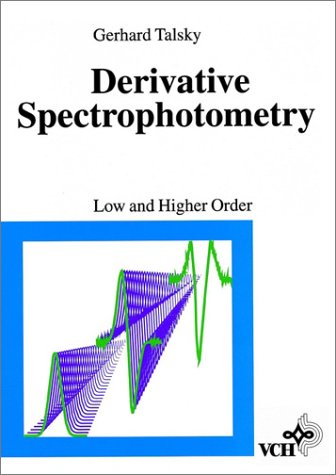Tarek Ahmed PhD PE9780750679725, 0750679727
Table of contents :
Reservoir Engineering……Page 4
Copyright……Page 5
CONTENTS……Page 8
Acknowledgments……Page 12
Preface to the Third Edition……Page 14
Preface to the Second Edition……Page 15
Preface to the First Edition……Page 16
Classification of Reservoirs and Reservoir Fluids……Page 18
References……Page 44
Properties of Natural Gases……Page 46
Behavior of Ideal Gases……Page 47
Behavior of Real Gases……Page 53
Effect of Nonhydrocarbon Components on the Z-Factor……Page 61
Correction for High-Molecular Weight Gases……Page 66
Direct Calculation of Compressibility Factors……Page 71
Compressibility of Natural Gases……Page 76
Gas Formation Volume Factor……Page 82
Gas Viscosity……Page 84
Methods of Calculating the Viscosity of Natural Gases……Page 85
Properties of Crude Oil Systems……Page 92
Methods of calculating Viscosity of the Dead Oil……Page 132
Methods of Calculating the Saturated Oil Viscosity……Page 134
Methods of Calculating the Viscosity of the Undersaturated Oil……Page 136
Properties of Reservoir Water……Page 141
Problems……Page 143
References……Page 150
chapter 3 Laboratory Analysis of Reservoir Fluids……Page 153
Constant-Composition Expansion Tests……Page 154
Differential Liberation (Vaporization) Test……Page 166
Separator Tests……Page 169
Extrapolation of Reservoir Fluid Data……Page 181
Laboratory Analysis of Gas Condensate Systems……Page 188
Problems……Page 201
References……Page 205
chapter 4 Fundamentals of Rock Properties……Page 206
Porosity……Page 207
Saturation……Page 212
Wettability……Page 216
Surface and Interfacial Tension……Page 217
Capillary Pressure……Page 220
Permeability……Page 244
Rock Compressibility……Page 271
Net Pay Thickness……Page 277
Reservoir Heterogeneity……Page 278
Areal Heterogeneity……Page 291
Problems……Page 298
References……Page 303
chapter 5 Relative Permeability Concepts……Page 305
Two-Phase Relative Permeability……Page 306
Relative Permeability Ratio……Page 325
Dynamic Pseudo-Relative Permeabilities……Page 328
Normalization and Averaging Relative Permeability Data……Page 330
Three-Phase Relative Permeability……Page 337
Problems……Page 346
References……Page 347
chapter 6 Fundamentals of Reservoir Fluid Flow……Page 348
Types of Fluids……Page 349
Flow Regimes……Page 351
Reservoir Geometry……Page 353
Number of Flowing Fluids in the Reservoir……Page 356
Fluid Flow Equations……Page 357
Steady-State Flow……Page 359
Unsteady-State Flow……Page 390
Constant-Terminal-Rate Solution……Page 401
Pseudosteady-State Flow……Page 430
Principle of Superposition……Page 459
Transient Well Testing……Page 470
Problems……Page 493
References……Page 499
Vertical Oil Well Performance……Page 501
Horizontal Oil Well Performance……Page 545
Problems……Page 559
References……Page 561
Vertical Gas Well Performance……Page 563
Horizontal Gas Well Performance……Page 594
Problems……Page 597
References……Page 598
chapter 9 Gas and Water Coning……Page 600
Coning……Page 601
Coning in Vertical Wells……Page 604
Breakthrough Time in Vertical Wells……Page 637
After Breakthrough Performance……Page 641
Coning in Horizontal Wells……Page 646
Horizontal Well Breakthrough Time……Page 655
Problems……Page 663
References……Page 665
chapter 10 Water Influx……Page 667
Classification of Aquifers……Page 668
Recognition of Natural Water Influx……Page 671
Water Influx Models……Page 672
Problems……Page 745
References……Page 748
chapter 11 Oil Recovery Mechanisms and the Material Balance Equation……Page 750
Primary Recovery Mechanisms……Page 751
The Material Balance Equation……Page 769
Problems……Page 823
References……Page 826
chapter 12 Predicting Oil Reservoir Performance……Page 827
Phase 1. Reservoir Performance Prediction Methods……Page 828
Phase 2. Relating Reservoir Performance to Time……Page 867
Problems……Page 870
References……Page 871
chapter 13 Gas Reservoirs……Page 872
The Volumetric Method……Page 873
The Material Balance Method……Page 876
Material Balance Equation as a Straight Line……Page 891
Abnormally Pressured Gas Reservoirs……Page 897
Problems……Page 923
References……Page 925
chapter 14 Principles of Waterflooding…….Page 926
Factors to Consider in Waterflooding……Page 927
Optimum Time to Waterflood……Page 932
Effect of Trapped Gas on Waterflood Recovery……Page 934
Selection of Flooding Patterns……Page 944
Overall Recovery Efficiency……Page 949
I. Displacement Efficiency……Page 951
II. Areal Sweep Efficiency……Page 1002
III. Vertical Sweep Efficiency……Page 1058
Methods of Predicting Recovery Performance for Layered Reservoirs……Page 1075
Waterflood Surveillance……Page 1086
Problems……Page 1102
References……Page 1111
Vapor Pressure……Page 1113
Equilibrium Ratios……Page 1116
Flash Calculations……Page 1120
Equilibrium Ratios for Real Solutions……Page 1124
Equilibrium Ratios for the Plus Fraction……Page 1137
Applications of the Equilibrium Ratio in Reservoir Engineering……Page 1139
Equations of State……Page 1171
Applications of the Equation of State in Petroleum Engineering……Page 1211
Splitting and Lumping Schemes of the Plus-Fraction……Page 1224
Problems……Page 1242
References……Page 1246
Decline-Curve Analysis……Page 1252
Type-Curve Analysis……Page 1281
Problems……Page 1350
References……Page 1352
Appendix……Page 1355
Index……Page 1368
About the Author……Page 1377







Reviews
There are no reviews yet.